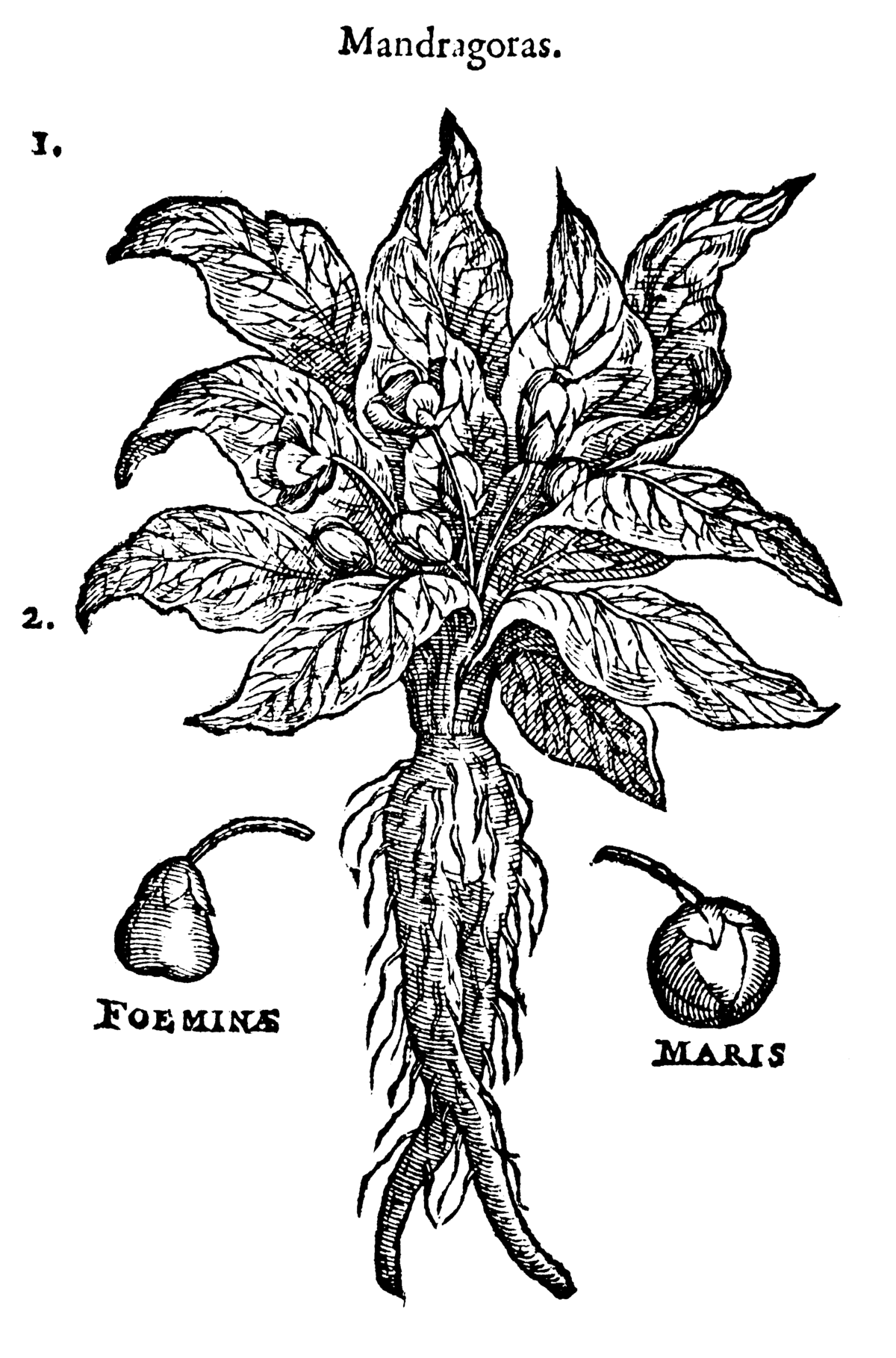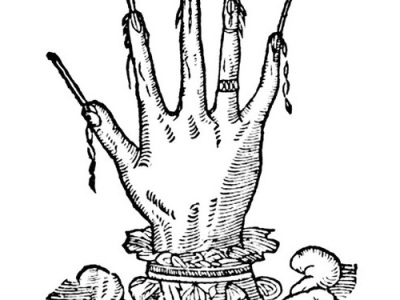When packing your kit for a casual night of burglary and thieving, you may be tempted to stick with the old tried-and-tested balaclava, torch and crowbar combination.
However, dear reader, may I suggest bucking the trend? Instead, try arming yourself with a tried-and-tested illuminating aid from yesteryear; the severed hand of a hanged man.
Lightweight and versatile! Let me tell you about it…
A Hand of Glory was of particular interest to burglars and house-breakers of yesteryear. It was a widely-held belief that using the dried and pickled hand of a hanged man as a candle or candle holder would transfer somewhat magical powers to the bearer. While the specifics vary between countries and regions, the desiccated hand generally assisted in robbery.
The hand’s powers were recorded in many 18thcentury documents and varied in inventiveness and severity.
These included, but were not limited to:
- Possessing the ability to burn forever; providing endless light.
- Providing a light only visible to the perpetrator and not to the householder.
- Holding the ability to unlock any door.
- Magically rendering any person motionless upon presentation of the hand.
The most consistent and well known of these abilities was that placing the hand outside or on the doorstep of a house would render all the occupants in such a deep sleep that the burglars movements could not wake them.
While using the hand as a candle holder seems the most practical of setups, there are many stories in which the fingers themselves act as candles. In such accounts, each finger that catches alight signals the number of inhabitants within the house who are sleeping. Subsequently, once the finger begins to burn, that person was believed to be unable to wake. However, an unlit finger could create confusion; the lit fingers could signal that all inhabitants were sleeping, but did not account for everyone within the house. An unlit finger could signal there were no more inhabitants or that one was still awake. There are similar accounts of burglars misjudging the amount of people within the house on account of inhabitants outnumbering flaming fingers.
The practicalities of lighting fingers may not have suited all criminals, so a popular alternative was purported to be bending the fingers around a separate candle which was itself sculpted from the deceased’s fat with the man’s hair as a makeshift wick.

But how does one create their own hand of glory? Surprisingly, it doesn’t seem to have been a task requiring specialist work, and it was certainly no mean feat to find an abundance of hanged men in the 18thcentury.
When creating your mystical severed appendage, there were rules to be followed. Your hand had to come from a man who was still swinging from the gallows. A right hand is preferred, especially if your chosen felon was a murderer – the right hand being regarded as ‘the hand that did the deed’. However, even severed hands aren’t black and white and some preferred to use the other, as left hands were traditionally thought of as the ‘sinister hand’ in Christian tradition.
Preferably, you should remove the hand at night, unless there’s a mad rush following the hanging. Afterwards, a series of blood-draining, finger positioning, pickling and mummifying follows.
In 1722, Petit Albert recorded how to prepare a hand yourself –
‘Take the right or left hand of a felon who is hanging from a gibbet beside a highway; wrap it in part of a funeral pall and so wrapped squeeze it well. Then put it into an earthenware vessel with zimat, nitre, salt and long peppers, the whole well powdered. Leave it in this vessel for a fortnight, then take it out and expose it to full sunlight during the dog-days until it becomes quite dry. If the sun is not strong enough put it in an oven with fern and vervain. Next make a kind of candle from the fat of a gibbeted felon, virgin wax, sesame, and ponie, and use the Hand of Glory as a candlestick to hold this candle when lighted, and then those in every place into which you go with this baneful instrument shall remain motionless.’
Examples of ‘Hand of Glory’ usage have been noted all over Europe for around 400 years. The name itself is thought to derive from the French term ‘main de gloire’, a version of ‘mandragore’, meaning ‘mandrake’. Mandrakes have long been regarded as having magical properties. Some historians believe the folk-beliefs surrounding the hand of glory relate directly to these mandrake beliefs. It was thought to be a plant that would grow beneath the gallows of a hanged man, directly from his ‘seed’. Which is a thought to dwell on in itself.

Mandrake leaves were also thought to resemble hands, which is an understandable reference. Similarly, in Saxon times, it is said that mandrakes were thought to shine at night, which similarly may have fed into the legend of the Hand of Glory’s powers.
But how does one protect their household from the mystical powers of a severed hand?
18thCentury householders had several options. A popular option was that, upon finding a burning hand, one could extinguish the flame with sterilised milk or blood, rendering it useless. However, no historical preventative ritual would be complete without an elaborate concoction of animal bits –
‘The Hand of Glory would become ineffective, and thieves would not be able to utilize it, if you were to rub the threshold or other parts of the house by which they may enter with an unguent composed of the gall of a black cat, the fat of a white hen, and the blood of the screech-owl.’

As most Hand of Glorys have been lost to the fleshy sands of time, there are few remaining today. As far as I am aware, the only remaining hand in the world rests in Whitby Museum where it is very nicely displayed beside a monumental Victorian jet and fossil collection.
Whitby’s hand was found in the early 20thcentury, hidden in the wall of a thatched cottage in Castleton by stonemason Joseph Ford. It has been in the museum’s possession since 1935 and continues to be a draw to this day.
As hanging and extreme superstitions lost their place in society, so did the Hand of Glory. And although only one hand remains, those of you living in historical houses might find some withered treats within your walls should you ever wish to take on renovations…
Sources:
Whitby Museum, North Yorkshire
http://myths.e2bn.org/mythsandlegends/origins15607-the-hand-of-glory.html
https://whitbymuseum.org.uk/whats-here/collections/special-collections/hand-of-glory/
https://www.thewhitbyguide.co.uk/hand-of-glory/
Images-
https://www.atlasobscura.com/articles/morbid-monday-severed-hands
evil.wikia.com
And author’s own.






Leave a comment